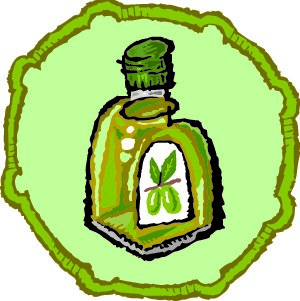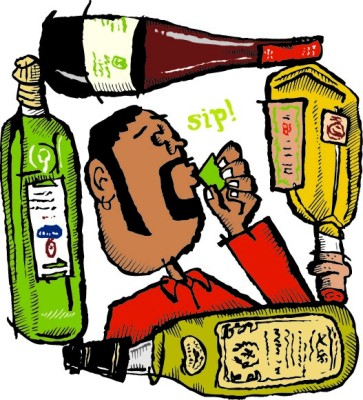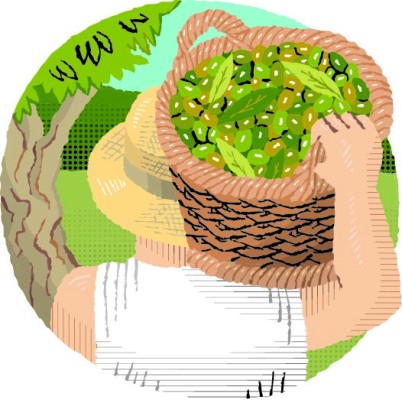
How long can you store olive oil?
As a very flexible rule, extra virgin olive oil can be stored for about a year. It likely will not go rancid after a year, but the flavors will mellow as the oil matures. There’s often a best by date on the bottle that is usually 1-2 years after it has been bottled.
What’s the best way to store olive oil?
Keep it in a relatively cool, dark place. Heat and light are enemies, so keep it away from window sills and stove sides. There’s no need to refrigerate, in fact, we recommend you avoid it.
When can I expect the next season’s olive oils to arrive?
Most of our olive oils come from the Northern Hemisphere, so the olives are harvested in the fall. The pressing and bottling happens in the fall or early winter. For any oils that aren’t produced in the United States, we’ll then wait for them to slowly make their voyage across the ocean to us. Keep an eye out for new harvest oils to be on our shelves by late spring or early summer.

Olive oil flavor guide
Light & Elegant
The most delicate oils. For an olive oil novice, this is where I recommend starting. These oils are often made near the seaside, which makes them a perfect match with baked fish.
Buttery & Silky
Lovely, rich, smooth oils – without any bite. If you want to taste the fruity parts of the olive without the peppery kick getting in the way, here’s the place to look. Good as a substitute for butter or when you want to play up the sweetness of an oil.
Smooth & Assertive
Intense oils, but not over the top. These have loads of flavor but not as much spicy kick as some others. In my opinion, these are the best all-around oils for pasta, dipping bread, and more.
Rustic & Fruity
The most intense oils. Loads of grassy flavor with a peppery, spicy kick. Use these alongside bold foods, like drizzled over grilled steaks or vegetables.

What impacts olive oil flavor?
Why does one olive oil taste different than another? There’s a few key factors that impact flavor:
1. Olive varietal
Just like wine made with Chardonnay grapes tastes different than wine made from Merlot grapes, olive oils made from different types of olives can have totally different flavors. There are thousands of different olives in the world. Some are milder. Some are more bitter. Some are more buttery. Each will imparts its own flavor when pressed for its oil.
2. Harvesting and production
Olives ripen in the fall. They all start green. If you leave them on the tree long enough they will all turn black. If you want a pepperier, grassier tasting oil, it’s better to look for one that was harvested earlier in the season when the olives were greener. If you’re looking for a richer, more buttery oil, you’re better off looking for one harvested later in the season when the olives were blacker. Not all olives ripen at the same time, so an oil maker looks for a certain mix of ripeness on the trees – green, brown, purple, black – before picking.
Generally, the best oils are pressed just hours after picking, while poorer quality, less flavorful oils may take longer and be treated less carefully. There’s one significant exception, however. In southern France, a few producers still use a traditional method where the olives are intentionally left to sit for a few days to ferment before pressing, creating deep black olive flavor and rich, buttery textures.
3. Region
Around the Mediterranean, olives have been pressed to make oil for thousands of years. Different regions have developed their own particular takes on oil. Many regions have unique olives found nowhere else, like the bold Coratina that’s widespread only in Puglia. Different regions can also have different standards for how ripe the olives should be when harvested, or how to handle the olives after picking. Since these traditional varietals and methods are often quite localized, knowing where a Mediterranean olive oil comes from can often be a shorthand into predicting what it will taste like.
Annual weather patterns matter too. Having a hotter, drier summer can make for a more intensely flavored oil; rain during the autumn harvest may water the flavors down. The only way to truly know what each year’s harvest is like is to taste. At Zingerman’s, we do that step for you! Each year we taste all the new harvest oils and update our tasting notes for each oil.

How we know our olive oil is the real deal
Every couple years it seems a big news story breaks about the dangers of adulterated extra virgin olive oil.
What’s the story?
The oils are invariably from producers who are blending olives from many sources. They’re mixing less expensive oils in, ones that are possibly not from the region they say they are, possibly not extra virgin. They cut costs, they cut the quality of the oil, they mislabel. This is totally illegal. But it’s not uncommon in the Big Olive Oil Industry.
How do we know that Zingerman’s olive oils aren’t subject to this kind of adulteration?
We’re buying our oils directly from farmers (with very few exceptions). They make olive oil using only the olives grown on their own estates. Most bottle only a couple thousand liters annually, as compared to the millions of bottles that come from big companies. They laugh at the idea that they’re importing containers of cheap oil to make a buck. We’ve visited most of them and, frankly, when you see the small scale of their production and the handiwork that goes into it, it’s no surprise that they’re baffled.
We taste every olive oil we carry, usually many times a year. We make sure that the quality is still up to snuff. It’s not hard to spot the fakers. You really can taste the difference.